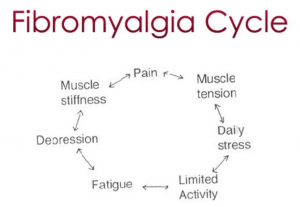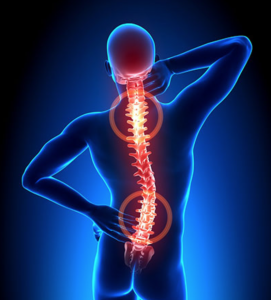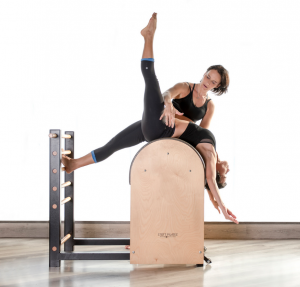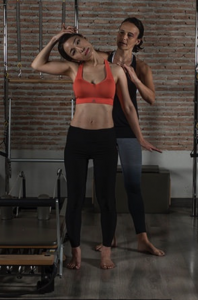Hello Everyone!
Today I would like to address a medical condition that is becoming increasingly well-known across the world:
F-I-B-R-O-M-Y-A-L-G-I-A
What Is FIBROMYALGIA?
This is a chronic condition that results in a variety of symptoms such as muscle aches & pain, stiffness, fatigue, sleep disorders and in some cases, memory fog (i.e., issues related to memory). Having some or all of the above can already make a person feel depressed, anxious and demotivated to help themselves.
Researchers around the world have recommended effected individuals to first be educated about the syndrome and what their body is capable of managing in terms of workouts or therapy since each body responds and reacts differently.


From all the research that has been conducted and based on some of my personal exposure to the knowledge of this condition, Pilates is trending to be a solution for people diagnosed with Fibromyalgia. The National Fibromyalgia Association also highly supports and encourages effected individuals to do Pilates as part of their therapeutic program which shows credibility of the method.
An inactive lifestyle and poor posture can trigger this syndrome and some people think that exercising will worsen the condition, however, Pilates involves a variation of strengthening and stretching exercises to build a healthy body. The first visible results from Pilates are seen when the posture becomes more aligned and several other areas are improved, i.e., muscle development & toning, flexibility, balance…etc.
HOW CAN PILATES HELP?
Pilates eases the effects of Fibromyalgia since it involves:
- Precision in low impact exercises to avoid any sharp pains or injuries;
- Effective breathing techniques to improve circulation, anxiety levels and promote overall mental health;
- Gentle stretching (combined with effective breathing) to reduce muscle tensions;
- A variety of controlled moments to gently strengthen the muscles and improve energy levels which combat fatigue.

If your lifestyle has been quite stagnant or inactive for a while, it is best to start slow with Pilates and gradually work your way up! With the right guidance from quality instructors, Pilates will show improvements for this syndrome and may even continue to become a part of the lifestyle which is a positive outcome as you only become healthier this way!
When Pilates becomes a form of therapy, it is referred to as Clinical Pilates and given the sensitivities behind these therapies, it is important to ensure that qualified instructors are chosen in a private setting. Through these private sessions, progress can be monitored effectively and right guidance and concentration is provided to ensure that Pilates does the magic! Currently at our Studio, (Pilates Station), we have a few clients who require Clinical Pilates and we also have a few testimonials to verify the progress made and it gives us immense pleasure to see the differences in how they feel.

For Fibromyalgia, according to research, an ideal Pilates instructor would be someone who has been given a comprehensive understanding of Pilates as well as a minimum of 5 years’ experience practicing with different bodies. Sana Motion (Pilates Station) not only has an orthopedic surgeon as part of our portfolio of instructors, but also have instructors with MORE than 5 years’ experience in practicing on different bodies in private sessions and have been trained on ‘special populations and injuries.’
Since the effects of this syndrome are individualized, personalized Pilates programs are identified and applied along with the versatile variety of equipment. The focus should be to firstly focus on gentle exercises on stabilizing the pelvic and scapula areas. Progression will be seen by REGULARITY!
Here are some studies proving how Pilates has helped individuals with Fibromyalgia.
Studies Conducted by Medical Research:
Study 1:
25 women with Fibromyalgia did Pilates from a Certified Trainer for 1 hour (3x a week) for 12 weeks vs. a group of women who had the syndrome and only did home stretches
Result: The 25 women showed significant improvements in pain and body functioning vs. those that didn’t do Pilates and continued to have pain and had no improvement.
Study 2:
20 Patients with Fibromyalgia were split into 2 Groups randomly (10 patients each). Pilates were given to 10 people on a daily basis for 4 weeks (Group P) and Yoga were given to 10 people on a daily basis for 4 weeks (Group Y).
Result: Evaluations showed that there were improvements in overall pain and fatigue for both the groups however, Group P scored more improvements on the post treatment evaluation aspects as compared to Group Y.
